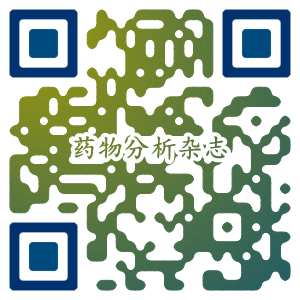美国药典新通则<1224><1225><1226>分析方法转移、验证和确认及其在中药痕量分析质量保证体系中的作用
Transfer,validation and verification of analytical procedures described in General chapter<1224><1225><1226> of U.S.Pharmacopoeia (USP37-NF 32)and their significances for trace analysis assurance system of traditional Chinese medicines
分类号:
出版年·卷·期(页码):2016,36 (5):0-0
DOI:
10.16155/j.0254-1793.2017.01.01
-----摘要:-------------------------------------------------------------------------------------------
中药中有害物质痕量残留分析不同于常规的常量或微量分析,对于分析技术要求较高。进一步规范该类分析工作,做好实验室质量控制,是保证分析结果的准确与可靠的重要前提。本文以最新版美国药典(USP37-NF32)通则<1224><1225>和<1226>为基础,介绍了分析方法转移、验证和认证的内容,讨论了三者之前的联系与区别,重点探讨了对于中药痕量分析的参考意义及技术要求。
-----英文摘要:---------------------------------------------------------------------------------------
Traditional Chinese medicine trace analysis is different from either conventional constant or trace analysis,which requires much higher analysis technology,and the well quality control of laboratory are important prerequisties for the accuracy and reliability of analysis results,which isimportant prerequisites for the quality control of laboratory.This article focused on the General Chapter<1224><1225><1226> of the latest version of U.S.Pharmacopoeia 37/ National Formulary(USP37-NF32)and introduced the technical requirements of“transfer of analytical procedures”,“validation of compendial procedures”and“verification of compendial procedures”.In addition,the article further discussed the interconnections and differences among the three analytical methods,and mainly explored their reference significance and technical requirements on trace analysis of traditional Chinese medicines.
-----参考文献:---------------------------------------------------------------------------------------
[1] 戴博,金红宇,田金改,等.中药中外源性有害残留物检测方法研究进展[J].药物分析杂志,2008,28(6):1014 DAI B,JIN HY,TIAN JG,et al.Progress achieved in determination method of extrinsic harmful residues in traditional Chinese medicine[J].Chin J Pharm Anal,2008,28(6):1014
[2] USP37-NF32[S].2014:1155,1157,1162
[3] ICH Q2(R1).Validation of Analytical Procedures:Text and Methodology[EB/OL].[2012-06-20].http://www.fda.gov/Drugs/GuidanceComplianceRegulatoryInformation/Guidances/ucm265700.htm
[4] Guidance for Industry:Analytical Procedures and Methods Validation:Chemistry,Manufacturing,and Controls and Documentation[EB/OL].(2000)[2014-08-01].http://www.drugfuture.com/library/ShowArticle.asp?ArticleID=69
[5] WHO Technical Report Series 937[EB/OL].(2006)[2014-08-03].http://whqlibdoc.who.int/trs/WHO_TRS_937_eng.pdf?ua=1
[6] OMCL Network of the Council of Europe Quality Assurance Document:Validation of Analytical Procedures[EB/OL].(1999)[2014-07-11].http://www.edqm.eu/en/quality-management-guidelines-86.html
[7] General Requirements for the Competence of Testing and CalibrationLaboratories(ISO/IEC 17025)[EB/OL].(2005)[2014-07-12].http://www.iso.org/iso/catalogue_detail.htm?csnumber=39883
[8] EP 7.1[S].2011:3
[9] 金红宇,戴博,田金改,等.中药中外源性有害残留物的控制[J]. 中国药事,2007,21(12):1013 JIN HY,DAI B,TIAN JG,et al.Control of extrinsic harmful residues in traditional Chinese medicine[J].Chin Pharm Aff,2007,21(12):1013
[10] 王京辉,许玮仪,金红宇,等.中药中有害残留物痕量检测分析方法验证原则探讨[J].药物分析杂志,2012,32(9):1704 WANG JH,XU WY,JIN HY,et al.Discussion of analytical method validation in trace analysis for harmful residues in Chinese herbs[J].Chin J Pharm Anal,2012,32(9):1704
欢迎阅读《药物分析杂志》!您是该文第 957位读者!




